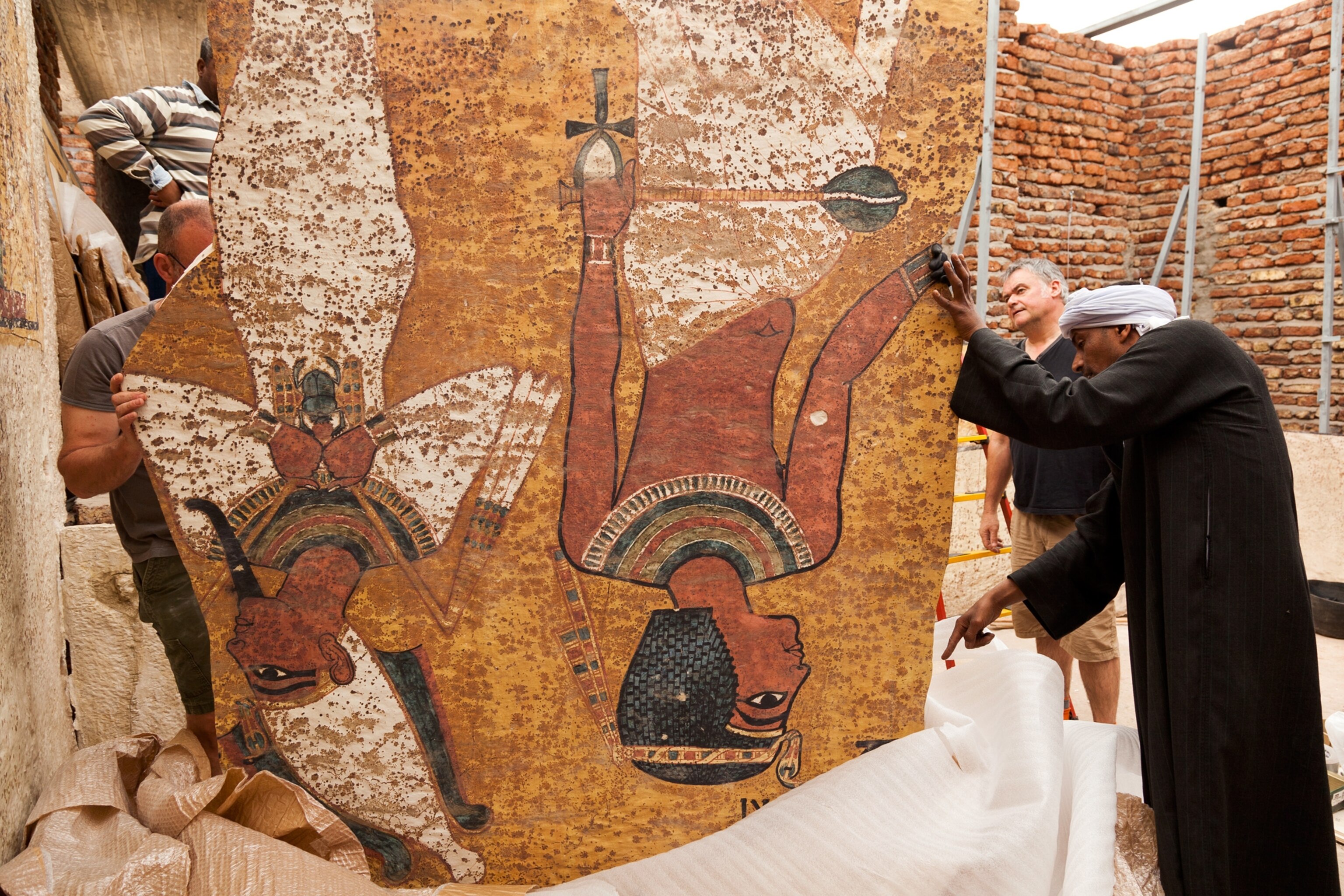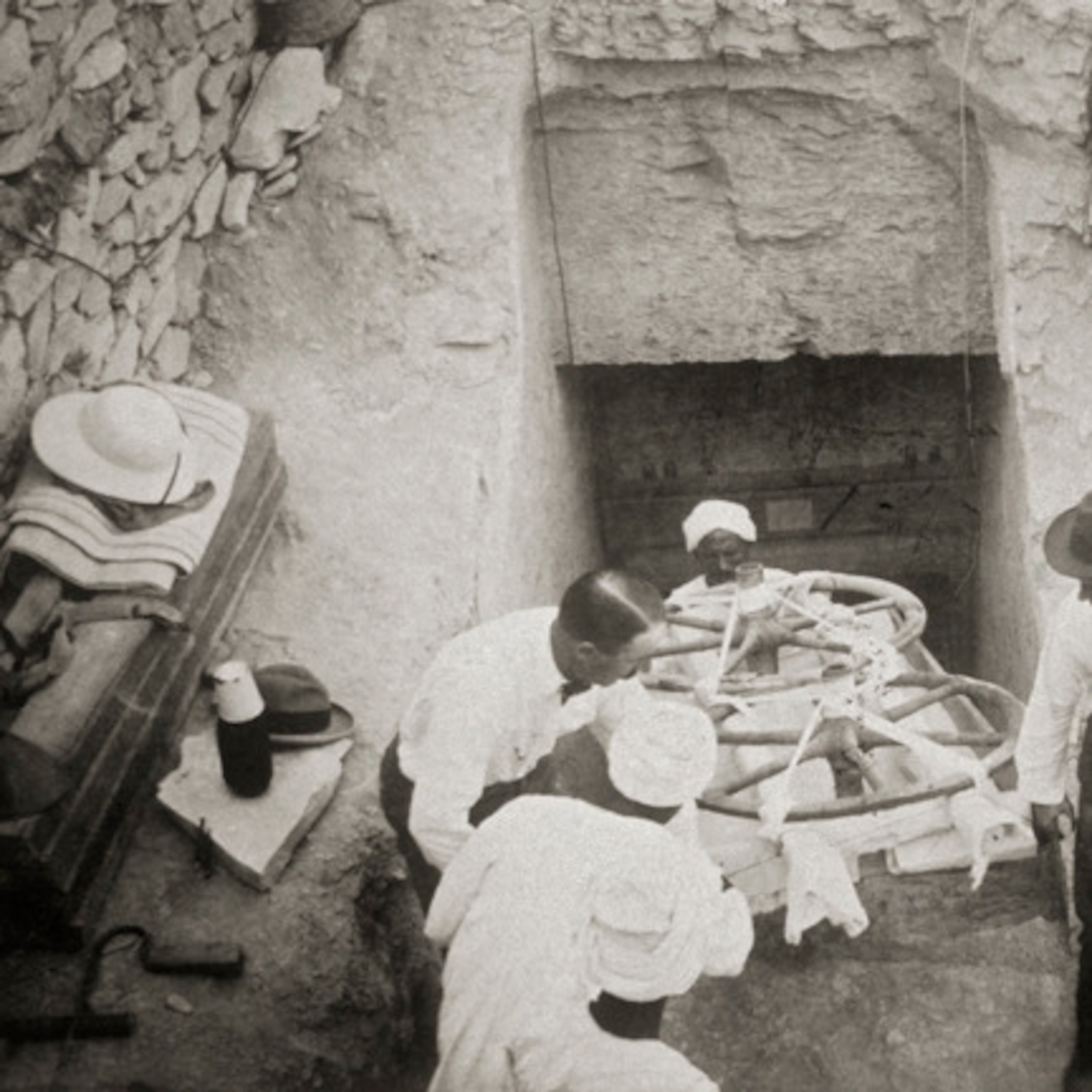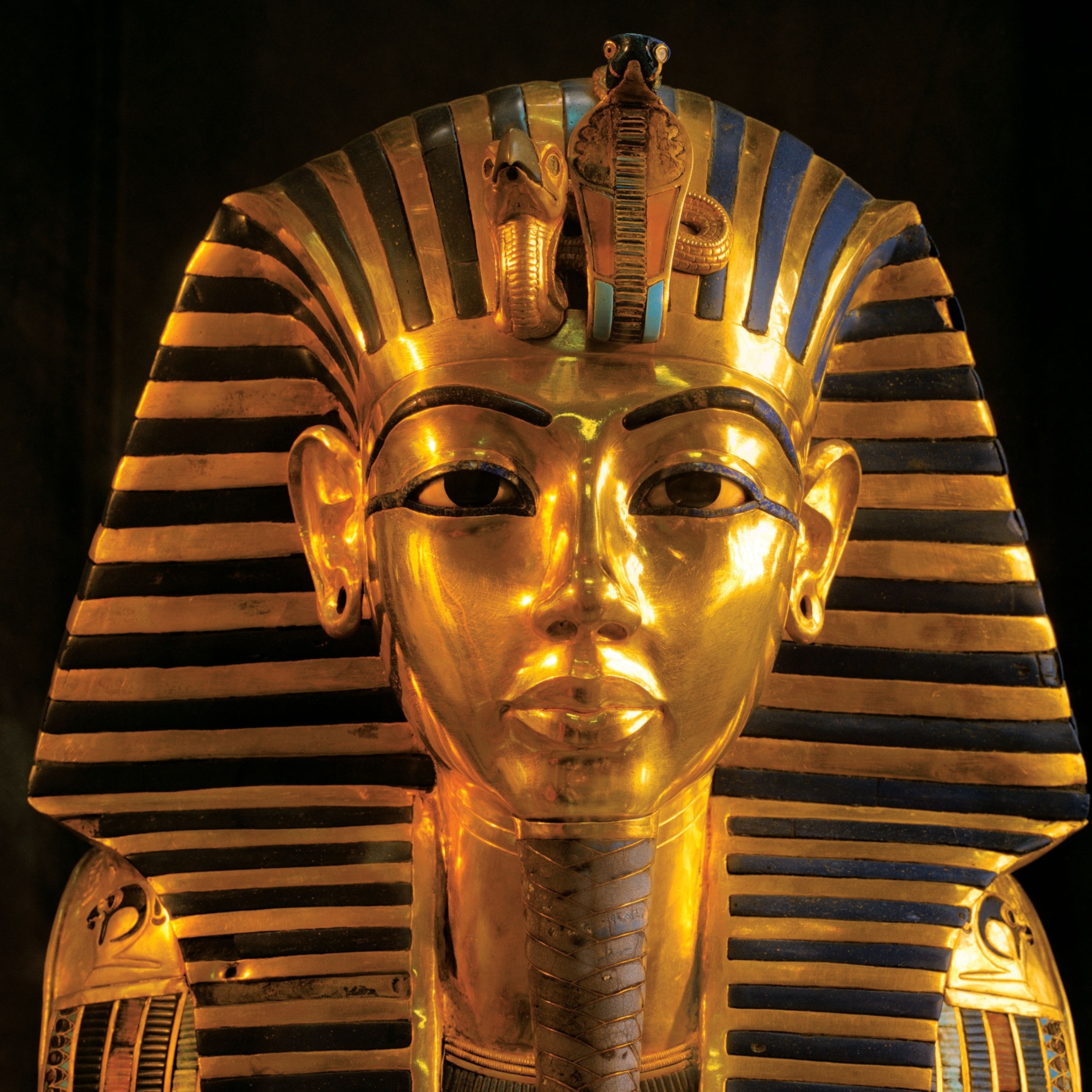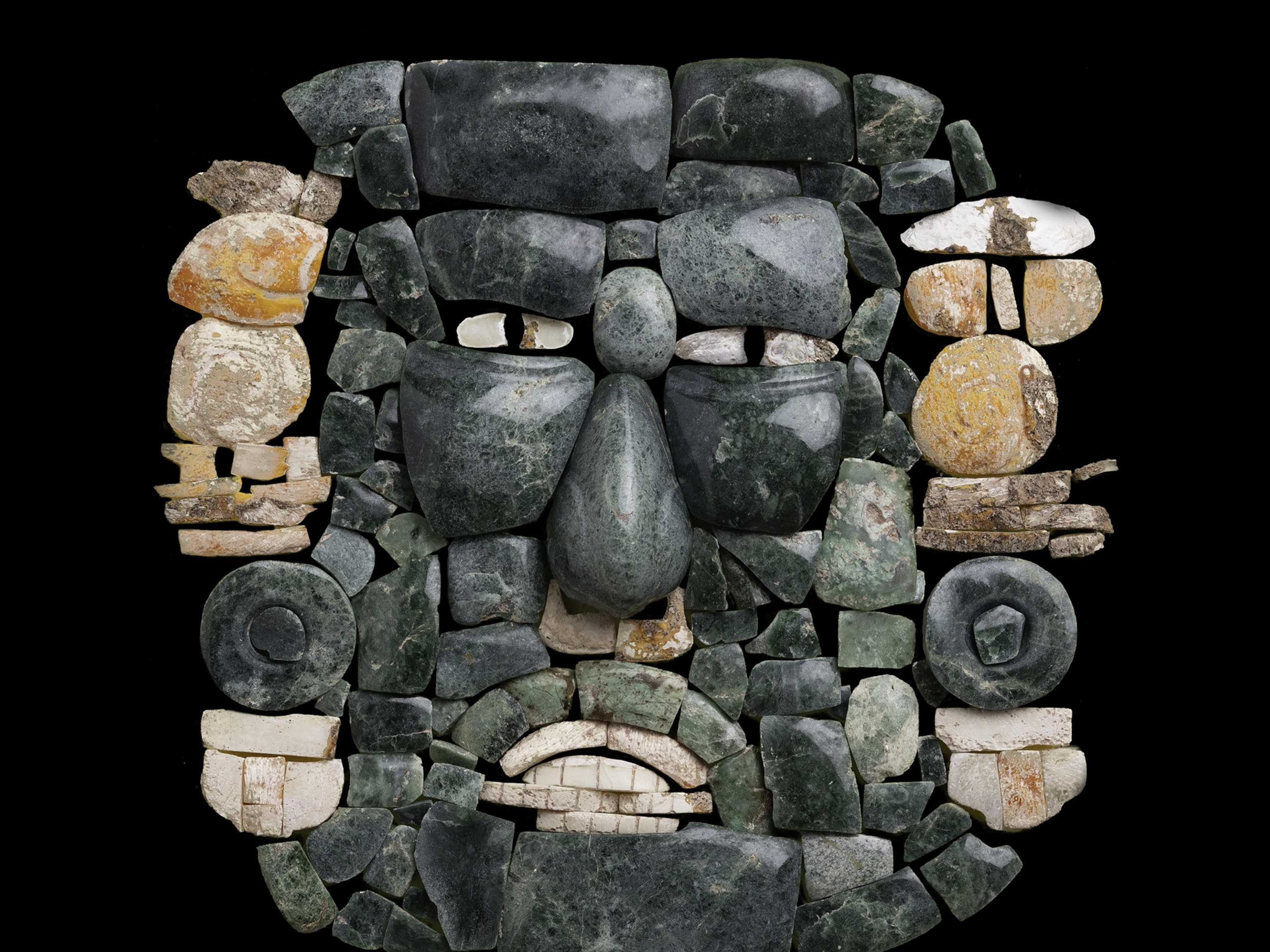
Tut's Tomb: A Replica Fit for a King
How high-tech copies of ancient archaeological sites can help preserve them.
The thing to understand about archaeology is that it's a science of destruction. The moment an ancient site is discovered, its physical condition immediately begins to deteriorate. Every dig removes a layer of the archaeological record that can never be replaced, and once humans are allowed to visit, with their hot breath and sweat and backpacks, walls start crumbling, pigments start flaking, and before you know it the site has to close down to "rest," or close for good—a victim of its own celebrity.
Now, a practice is gaining traction that may save us from inadvertently wrecking the very cultural treasures we most want to see: the creation of high-tech copies of ancient archaeological sites. We're not talking sized-down Las Vegas knockoffs of the Pyramids but forensically analyzed, 3-D copies so minutely detailed that the naked eye can't distinguish them from the originals.
Recently in Egypt's Valley of the Kings, the most ambitious large-scale creation of this kind was unveiled: an exact replica of the 3,245-year-old tomb of King Tutankhamun, apparently so authentic that one Egyptologist in attendance (Salima Ikram from The American University in Cairo) actually wept when she saw the burial chamber.
"She had a very emotional reaction, even knowing she was in a copy—that was a great moment for me," said Adam Lowe, the British artist whose Madrid-based company, Factum Arte, made the replica as a philanthropic project; he donated his team's time and raised money to cover other costs. The $690,000 project took five years, beginning in 2009, when the team used state-of-the-art laser scanning and digitizing equipment to minutely "record" every aspect of the tomb.
So the replica is a replica of the tomb circa 2009. It is not an attempt to present the tomb in its original imagined splendor, or even as it may have looked in 1922, when British archaeologist Howard Carter discovered it while excavating near the tomb of Ramses VI. On what Carter had thought would be a final dig, his workmen came upon a step carved into a rock that eventually led him to Tutankhamun; Tut was 19 when he died in 1322 B.C., possibly murdered by enemies or killed in a chariot crash or hippo attack, according to speculations over the years.
Underground in the sand, next to what had been Carter's house at the entrance to the Valley of the Kings and within a mile of the real tomb, is where they situated the replica. It occupies the same size footprint as the original, but the antechamber has been turned into a museum that documents all things Tut—the discovery, the contents, the "mummy's curse," and more. Why and how it looks the way it does, the difficulty of preserving it, the remarkable skill of Egyptian craftsmen who made it three and a half thousand years ago. Together, the antechamber and Carter's house provide a comprehensive biography of the tomb, something the real one, considered too sacred to be adulterated by even the most well-meaning ways of the world, cannot offer.
"You walk down the ramp, same as the tomb," said Lowe of the replica, and pass through the antechamber museum. "But then, as you look into the burial chamber, at that moment something very physical happens. The chamber is identical."

How They Did It
First of all, the replica isn't a clone, which technically would be a molecular copy. The team recorded the original site (using high-resolution color photography and 3-D laser scanning systems that measured up to one hundred million points per square meter), then took the hard drives back to their workshops in Madrid and, as Lowe put it, "rematerialized the physical site."
They started with the walls. To get the surfaces right, they used a routing machine to cut and shape a rigid foam board made of high-density polyurethane. This router was controlled by a computer, and the computer could direct what the router did, up to a resolution of less than a quarter of a millimeter and operating in three dimensions. "It looks like a high-speed drill moving left and right, up and down, and in space," said Lowe. "We tell the machine to move back and forth cutting the surface until it resembles the original." The relief was then molded in silicone, cast in a dense resin, and backed with a sound-absorbent material to add acoustics.
A more complex and tedious challenge came next: duplicating the painted wall scenes of the "boy king" Tut's journey by boat into the afterlife. To do it, they had to devise what Lowe described as "fine elastic skins" using an acrylic gesso. The skins were run off in layers on a specially designed flatbed digital printer, then worked together until the color, tone, and sheen were an exact match and could be mapped onto the surface by hand—a slow, meticulous process. "It had to be a perfect fit to work," Lowe said. Once positioned, the assembled skin was adhered to the wall in a vacuum bag to ensure uniform pressure on the contact adhesive as it cured.
The sarcophagus was made essentially the same way as the walls, routed and then cast in resin, with its color applied by hand. The last thing was the lid, made from a mixture of gypsum, different pigments, and animal glue, which formed a granite-like material that was a close look-alike to the original's. "It was a lot like cooking," said Lowe. (Apparently, there was a lot of kneading.)
The tomb was assembled in Madrid, then cut into manageable sections before being shipped back home for reassembly.
"Every bit of micro bacteria is in its place, every crack, every flake of paint," said Lowe. "It's effectively like a portrait, or a performance, of the tomb from when we recorded it in 2009." Over the past five years, a tremendous amount of love and care and human engagement has gone into the work, and that's what Lowe thinks people react to when they see it. "It's King Tut mediated through new technology and human skills. It's this mix, where technology comes together in the right spirit and communicates something very emotionally powerful that few expected."

Beyond Tut
The backdrop to the arrival of technological marvels like this facsimile is the emergence of a new field, cyber archaeology. Cyber archaeology seeks to embrace digital technology while looking for ways it can serve, enhance, and share the "experience" of antiquity. It's a marriage of state-of-the-art digital tools with computer science, archaeology, engineering, and natural sciences.
One approach is to make a physical copy, like Lowe's; the other is to do scholarly research about a site without actually having to be at the site. Archaeologists now have the capability to digitally record an entire excavation and manipulate the data to create a 3-D framework that can then be projected through a slew of adjoined television screens in such a way that you feel as though you're walking around inside a video.
"We're able to walk away from an excavation with the whole archaeological site on a hard drive," said Thomas Levy. He's a professor of anthropology and archaeology at the University of California, San Diego and associate director of the Center of Interdisciplinary Science for Art, Architecture and Archaeology.
"Let's say you wanted to test your ideas about when a site was built, which we did with a contentious site in Jordan related to King Solomon's mines," he said. "With this amazing data I've collected, I can then take you into a 3-D visualization theater and we can enter the excavation. I can be in San Diego and I can get a cup of coffee and I can throw in my 3-D data set with geo-reference pics of the actual excavation, and I can walk around in it again."
What he was describing sounded suspiciously like a "holodeck," or perhaps a precursor to a holodeck—the computer-driven theater on Star Trek: The Next Generation that can create fully functional, entirely "solid" three-dimensional environments from any place and time that the characters then interact with. The apparatus in San Diego that Levy's talking about involves 30 television screens that "we kind of knit together, put in a kind of wave pattern or circle, and you can walk in front of them or around them and they have the ability to track your vision, so if you tilt your head you can look around corners." The effect is a realistic experience that Levy says can have its own emotional impact: "What if I go to Machu Picchu but can't stay up on the mountain past four in the afternoon, but somebody did a digital reconstruction and recorded it at sunset? Then I can go back home to UCSD and project it through our 3-D visualization environment and have that experience."
As for the Tut facsimile: Although it is "actually" in Egypt, he said, the beauty of the technology is it allows anyone who has those data files to make a copy "anywhere on the planet." In a pleasing irony, technology may pave the way to sustainable tourism and actually save antiquity—"sharing" it with a broader audience than ever imagined while sparing the originals from the ravages of tourism and making it difficult for any privileged few to hoard world cultural heritage and keep it unavailable.
This emergence of cyber archaeology raises questions it will take years to resolve as "archaeological policy" makers sort out the headaches and opportunities: Who owns the data? What do you do with the original sites as you run out of room on the planet? How do you distribute collected digital data ethically?
"It's really exciting," Levy said.

Replicas? "Why not?"
It's not as if there haven't been archaeological copies in the past, notably the Lascaux cave in southwestern France and the Altamira cave in northern Spain, both famous for their Paleolithic drawings and both created before the new technology. A complete site re-creation is under way at Lascaux; another is in the works for the Chauvet cave in the Ardèche region of France.
Most archaeologists seem to be in favor of them, according to Robert Brier, an Egyptologist and senior research fellow at Long Island University. "Experientially, replicas are fabulous," he said. The fabricated Tut "is not going to hurt anybody, and it'll do good for Egypt and save the tomb. It's a no-brainer." The question, he said, is will tourists pay to visit even fabulous fakes—and how much? As one reader wrote in the comments following an online article: "Can we pay fake money to see them?"
One archaeologist who has reassessed the value of copies is David Silverman, professor of Egyptology at the University of Pennsylvania; he's in charge of the Egyptian collection at the Penn archaeological museum and has been the curator of two traveling King Tut exhibitions. In the past, he always advocated seeing the originals. But they're so fragile and there are such problems maintaining them because of their vulnerability to wind erosion, air pollution, neglect, looting, and willful destruction, not to mention the corrosive effects of carbon dioxide and moisture disseminated by tourists. (At its height, the original King Tut received a thousand visitors a day in a space of 60 meters—about 72 yards—square that was never meant to be visited at all.) "It's not easy" to keep the sites up, Silverman said, and sometimes it's not easy for people to get to them. "So I'm re-looking at it and saying, OK, there isn't any other way—is this a good thing to do? And I think, why not?"
Of course everyone would prefer to experience "the real thing," Lowe said. But since the opening of the replica, he has sensed a shift away from the more purist beliefs regarding authenticity. "If what's important is deepening understanding, then this replica is an approach that can lead to a deeper understanding. If it's about some kind of prejudice that you have to see the original, then you need to confront your own prejudices." The original site is expected to remain open for some time. "People are actually going to both sites and asking themselves quite profound questions," and the more they do that, and talk and share, he said, "the happier I'll be." The "No Photos" signs? He wants them replaced with ones that say, "Please Take Photos."
Meanwhile, Back in Egypt: A Facsimile Cottage Industry
Lowe is moving forward with the next phase of a project that started with King Tut. Members of his Factum Arte team are going to teach local workers in Luxor, the ancient capital, where the replica resides, how to do what they did—digitally document sites and then rematerialize them. Two more are on the drawing board: Seti I, said to be the largest and most important tomb in the Valley, and Nefertari, said to be the most beautiful. Historically, tourism has been a big source of income and foreign currency for Egypt, but due to political chaos and explosions in Cairo, the numbers are way down. It's a lot to ask of a replica to reinvigorate the market and eventually attract half a million visitors a year. But that's the sacred wish.
"The response locally has been very emotional," Lowe said. "The people realize this could be their future"—a source of jobs in the region for years to come—"and have taken it on board. It could become a whole industry!"
He has a vision of tourists actually wanting to visit the workshops where the facsimiles are being made. He sees the Tut data being used to monitor decay in the actual tomb. He sees scholars—or, especially, just anybody—diving into this digital world and finding themselves unexpectedly deepened, as human beings, and actually experiencing a personal link with antiquity.
"All of this is a real game-changer."








